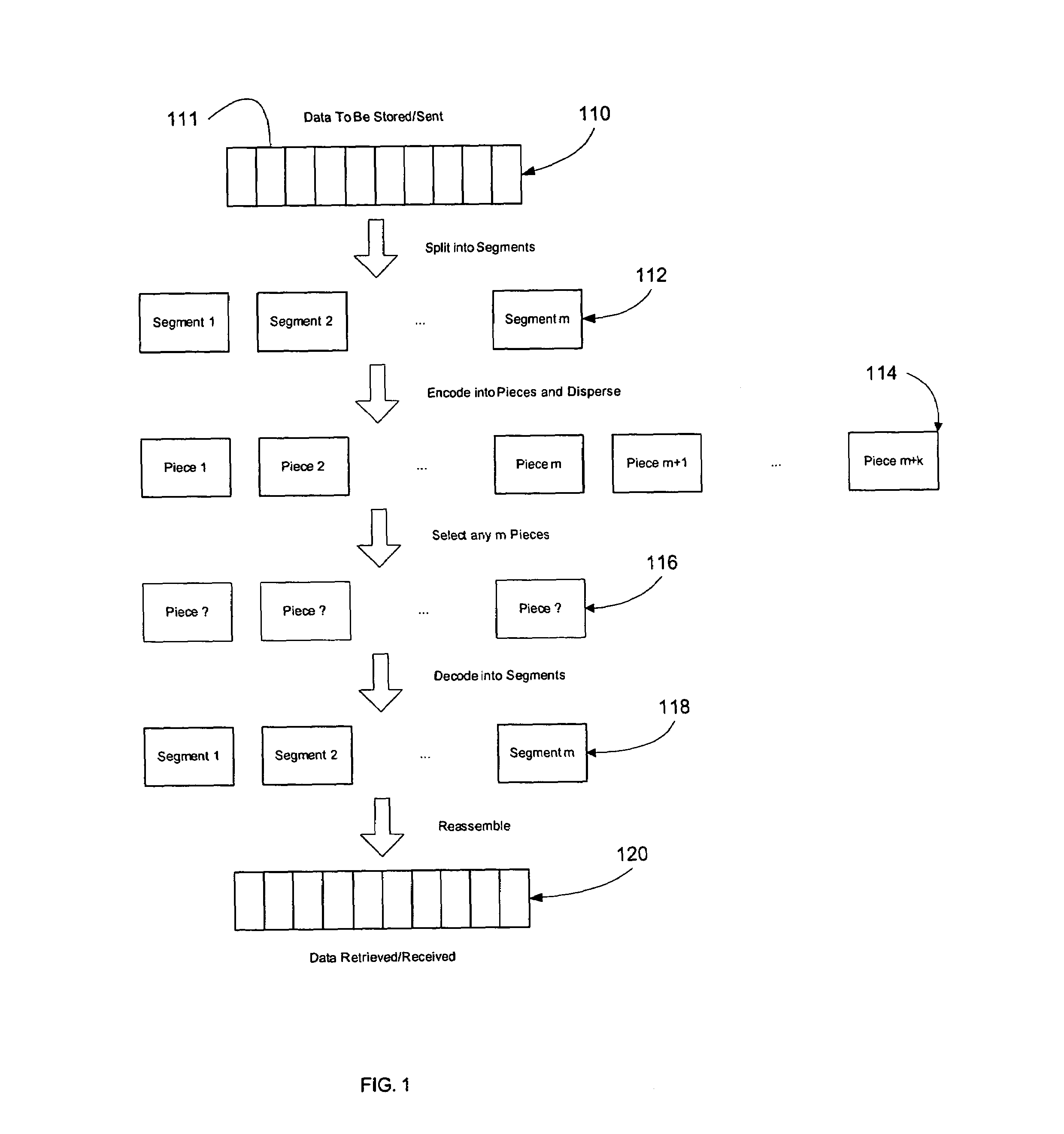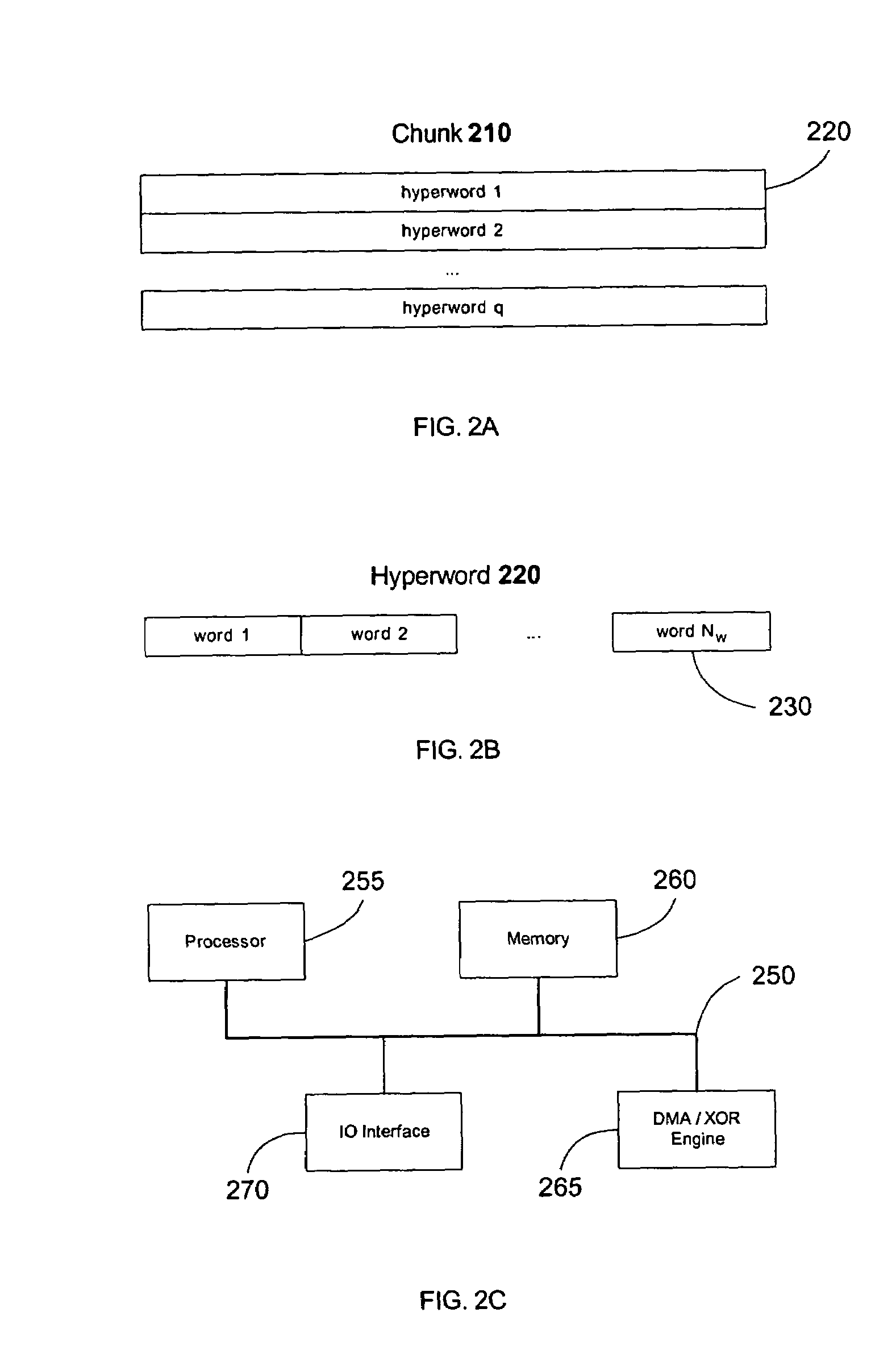Efficient method for the reconstruction of digital information
- Summary
- Abstract
- Description
- Claims
- Application Information
AI Technical Summary
Benefits of technology
Problems solved by technology
Method used
Image
Examples
Embodiment Construction
[0044]FIG. 1 illustrates the treatment of digital data 110 in a process of using a linear erasure code to protect the data from loss and to recover the data once loss has taken place. The data 110 to be stored or communicated is comprised of N chunks 111 and is broken into m segments 112. Each of the segments is of equal length and contains N / m chunks. The data 110 may be padded so that it is evenly divisible by m. Each chunk 111 (referred to as an “element” by Rabin) is comprised of a fixed number of bits that are manipulated as a value in a computational field.
[0045]Through use of a coding matrix as described below, the m segments are encoded into m+k pieces 114, where k is the maximum number of erasures that the system is designed to correct. Each piece 114 contains N / m chunks. If the coding matrix is systematic, the first m pieces 114 are identical to the m segments 112. The m+k pieces are dispersed by storing them on m+k separate storage devices (not shown) or by transmitting t...
PUM
 Login to View More
Login to View More Abstract
Description
Claims
Application Information
 Login to View More
Login to View More - R&D
- Intellectual Property
- Life Sciences
- Materials
- Tech Scout
- Unparalleled Data Quality
- Higher Quality Content
- 60% Fewer Hallucinations
Browse by: Latest US Patents, China's latest patents, Technical Efficacy Thesaurus, Application Domain, Technology Topic, Popular Technical Reports.
© 2025 PatSnap. All rights reserved.Legal|Privacy policy|Modern Slavery Act Transparency Statement|Sitemap|About US| Contact US: help@patsnap.com



